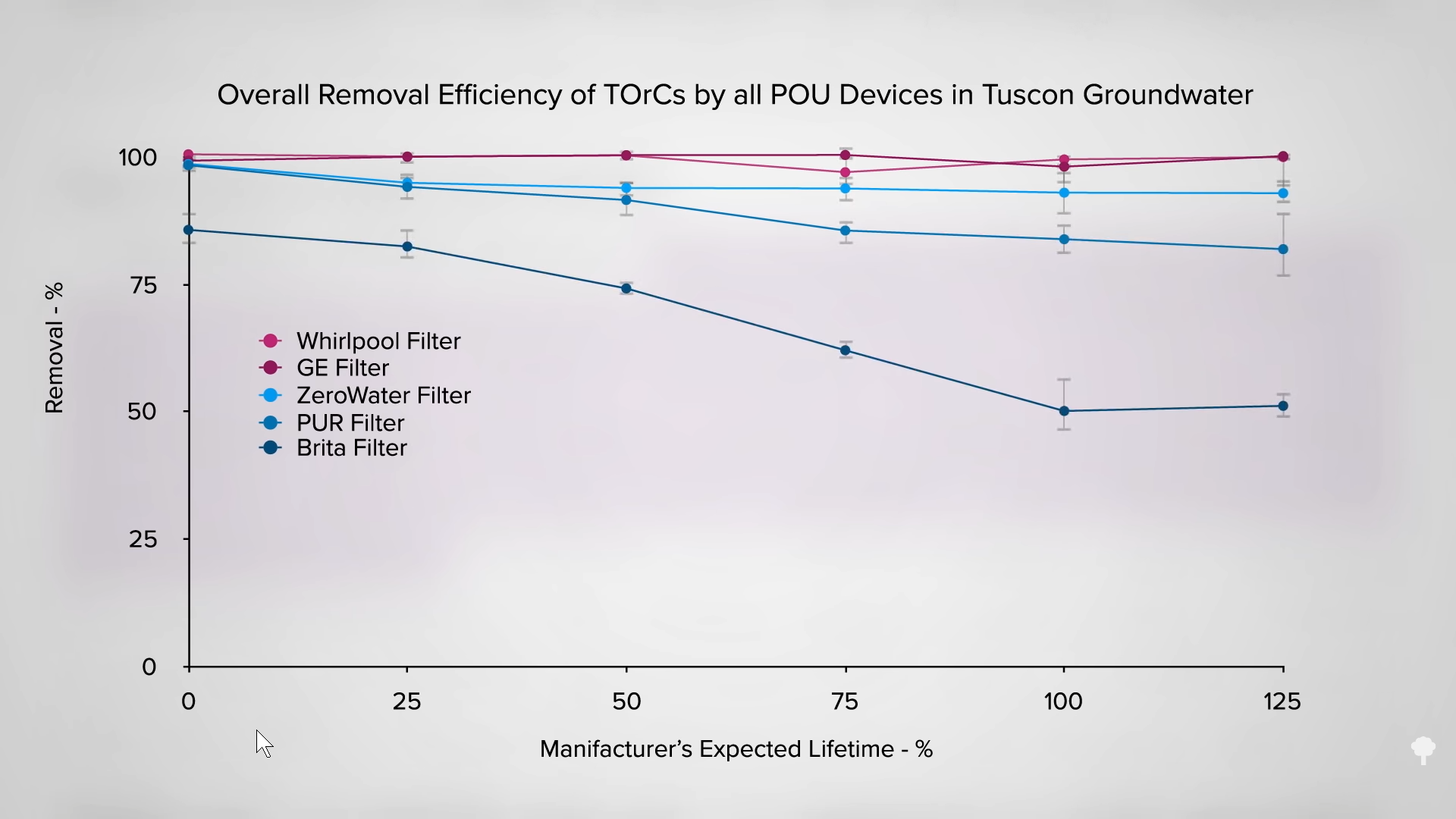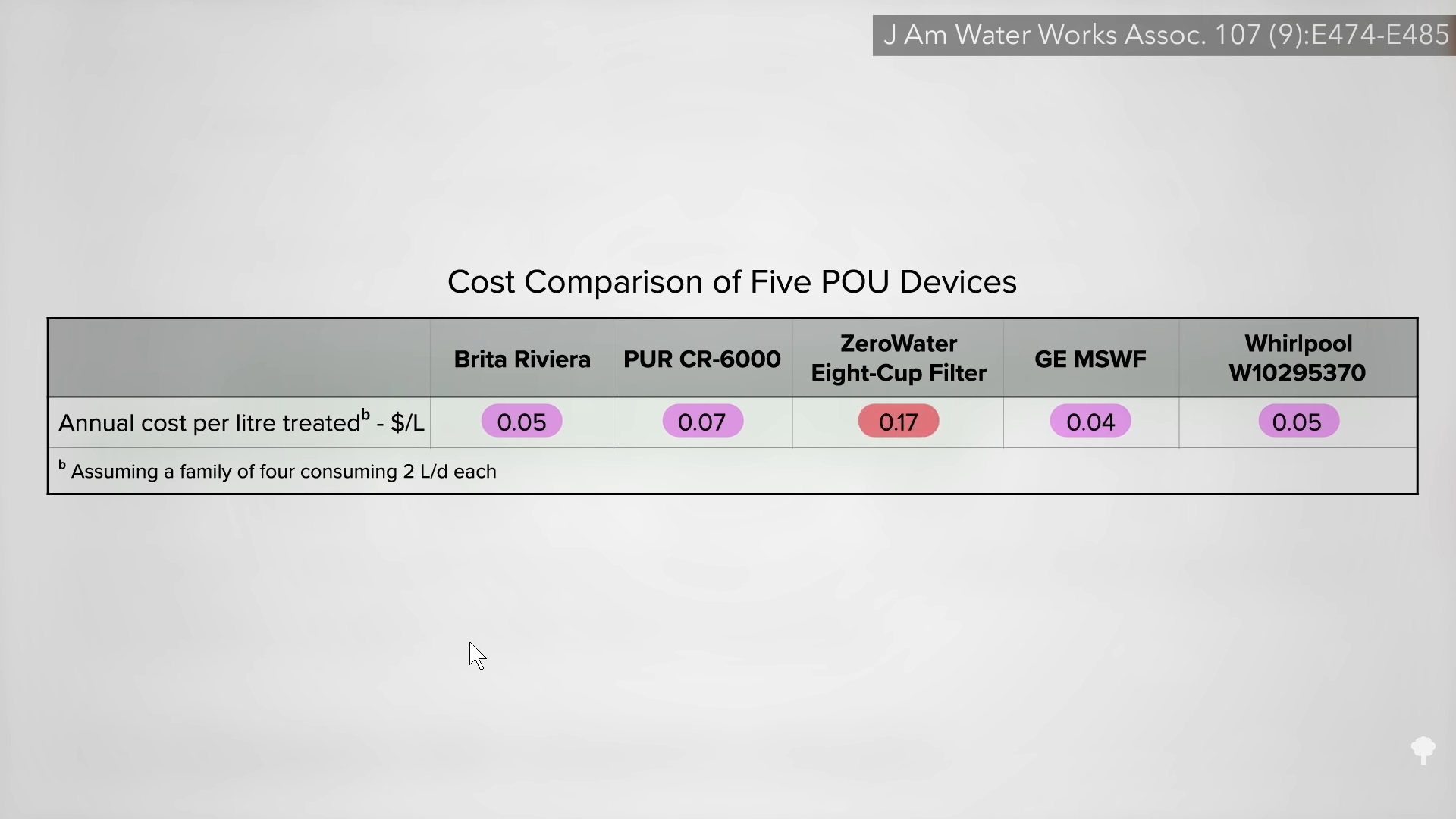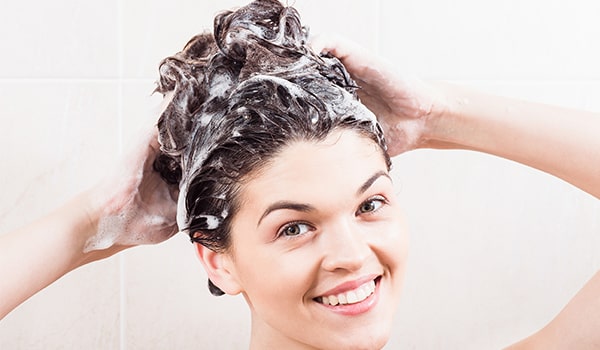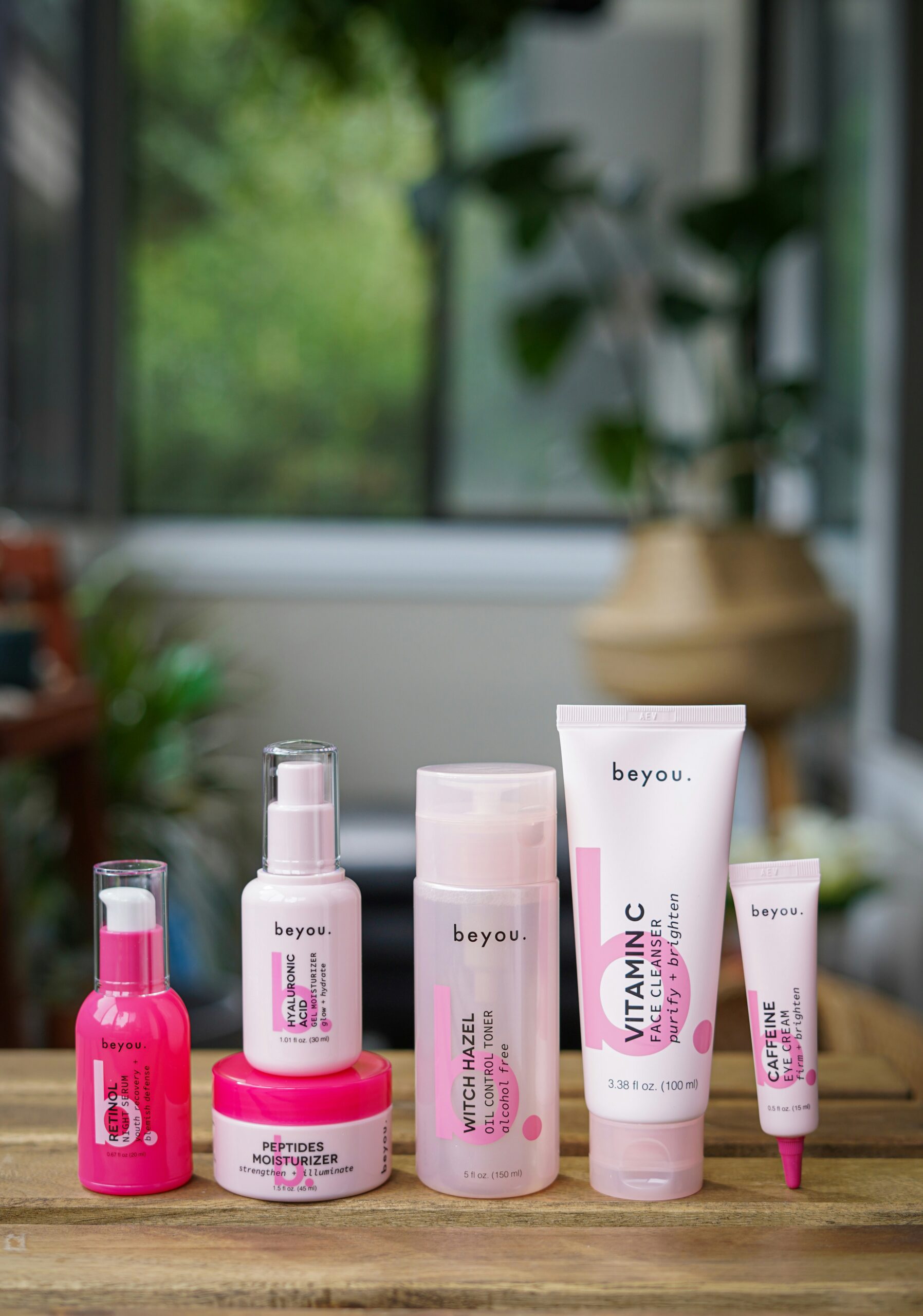[ad_1]
There are disinfection byproducts in faucet water. What occurred when Brita, PUR, ZeroWater, and fridge water filters had been put to the take a look at?
Although many distrust the protection of faucet water, a research of 35 manufacturers of bottled water didn’t find them to be essentially safer, cleaner, or of a better high quality than water straight out of the tap. How a lot is that saying, although? Two research published within the 1970s “modified without end the sooner perspective that ingesting water security was solely about waterborne illness.” In actual fact, it was our combat in opposition to microbial contaminants that led to a brand new form of contamination—within the type of disinfection byproducts.
The 2 landmark papers in 1974 solved the thriller of the supply of chloroform in ingesting water: We met the enemy, and he’s us. The chlorination of ingesting water—“disinfection [that] is essential for maintaining the microbiological security of water”—was interacting with pure natural matter from the water’s supply and creating chlorinated compounds that may not solely lead to off-flavors and smells but in addition pose a possible public well being threat. Greater than 600 disinfection byproducts have been recognized to this point.
After many years of analysis into the matter, it seems that the life-long ingestion of chlorinated ingesting water results in “clear extra threat” for bladder most cancers. There is additionally some proof of elevated threat of sure varieties of beginning defects, however many of the concern has targeted on the bladder most cancers hyperlink. Forty years of publicity might increase your odds of bladder most cancers by 27 p.c. The Environmental Safety Company estimated that 2 to 17 p.c of bladder most cancers instances in america are because of these disinfection byproducts in ingesting water. Nonetheless, this assumes the hyperlink is certainly one of trigger and impact, which has but to be firmly established.
One of the best ways to cut back threat is to deal with the trigger. International locations may prevent the formation of disinfection byproducts within the first place by means of the higher preliminary elimination of supply water’s “pure natural matter” (what my grandmother would have referred to as schmutz). Some international locations in Europe, comparable to Switzerland, the Netherlands, Austria, and Germany, have newer, well-maintained ingesting water programs that may distribute faucet water free from residual disinfectants, however the associated fee to improve the infrastructure of even a small metropolis in america may run within the tens of thousands and thousands of {dollars}. Because the tragedy in Flint, Michigan, revealed, we appear to have hassle retaining even frank toxins out of the faucet.
Almost 40 p.c of People use some type of water purification gadget. I have a look at the comparisons of those gadgets in my video Is It Best to Drink Tap, Filtered, or Bottled Water?. Faucet water from Tucson, Arizona, was pitted head-to-head in opposition to two of the commonest purification approaches—pour-through pitchers and fridge filters. As you’ll be able to see within the graph under and at 2:53 in my video, each fridge filters (GE and Whirlpool) did equally nicely, eradicating greater than 96 p.c of hint natural contaminants, and edging out the three pitcher filters. ZeroWater caught 93 p.c, and PUR pitchers obtained 84 p.c. By the point the filters wanted to get replaced, Brita was solely catching 50 p.c. An identical discrepancy was found between filters from PUR and Brita examined particularly in opposition to disinfection byproducts. They each began out about the identical originally, however by the top of the filter’s life, PUR appeared to do higher, as you’ll be able to see under and at 3:15 in my video. Reverse osmosis programs can work even higher, however the associated fee, water waste, and lack of hint minerals don’t appear value it.


As you’ll be able to see under and at 3:40 in my video, the annual price for purifying your water with a pitcher or fridge filter was calculated to be about the identical, at solely round a penny per cup—aside from the ZeroWater model, which is as much as 4 instances costlier.

I at all times figured the “change by” dates on filters had been simply firm scams to get you to purchase extra replacements, however I used to be unsuitable. As a result of I drink filtered water principally only for style, I used to attend till the water began tasting funky. Unhealthy thought. Not solely do the filters finally lose a few of their elimination capability, however bacterial development can construct up inside them, leading to your “filtered” water having larger bacterial counts than water straight out of the faucet. You’d be truly making your water dirtier quite than cleaner, so you will need to change filters frequently.
As an apart, I used to suppose the identical concerning the recommendation to alter your toothbrush each three months. Which Large Brush govt thought that one up? However, no, I used to be unsuitable once more. Toothbrushes can build up biofilms of tooth decay micro organism or turn out to be breeding grounds for micro organism to flume into the air with every bathroom flush earlier than going again into our mouths. Enjoyable truth: A single flush can spew up “thousands and thousands of micro organism into the ambiance” that may settle in your good, moist toothbrush. The excellent news is that quite than shopping for new brushes, you’ll be able to disinfect the pinnacle of your toothbrush with as little as a ten-minute soak in white vinegar or, much more frugally, vinegar diluted by half with water.
Hydration is vital. See associated movies under for extra info.
Avoiding waterborne pollution if attainable can also be vital. See my movies Lead in Drinking Water and Friday Favorites: Benefits of Turmeric for Arsenic Exposure.
How Many Glasses of Water Should We Drink a Day? Watch the video to search out out.
[ad_2]
Source link





















